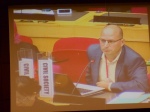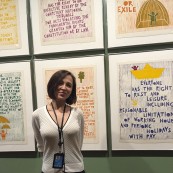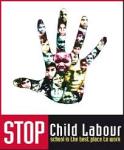 By Sébastien Nkoa Ayissi, OP, Cameroonian economist, banker, and student of Theology at the Catholic University of East Africa in Nairobi, Kenya, and SNDatUN delegate to the Third International Conference on Financing for Development
By Sébastien Nkoa Ayissi, OP, Cameroonian economist, banker, and student of Theology at the Catholic University of East Africa in Nairobi, Kenya, and SNDatUN delegate to the Third International Conference on Financing for Development
The Addis Ababa Third Conference on Financing for Development (FfD3), which I attended recently (13-16 July) as a representative of the Sisters of Notre Dame de Namur, wrapped up few weeks ago, leaving behind a taste of failure. Failure, since the general observation of CSO delegates is that, compared to Monterrey and Doha, Addis was regressive on many points. Tax issues have not been solved, ODA (Official Development Assistance) has not been clarified, PPPs (Public Private Partnerships) have been reinforced at the expense of people living under poverty, trade and debt issues have not been clarified, while the systemic issues of our world’s financial system and climate challenges and gender inequalities have been just brushed out. A survey of these issues is a clear sign that a lot has to be done and the fighting spirit does not relent.
Looking at DPR (Domestic Public Resources) reveals that developed countries are not ready to stop malpractice that goes on in that sector through illegal acts such as tax evasion, transfer pricing, trade mispricing, national custom authorities reinforcement, as well as judicial systems. These propositions put together with a common agenda on fiscal cooperation and a different type of PPPs would have helped LDCs (Less Developed Countries), SIDSs (Small Island Developing States), LLDCs (Land Locked Developing Countries) to mobilize huge amount of resources at the domestic level which would have helped them to considerably solve the challenge of poverty. By refusing to address those issues, FfD3 denied to those above-mentioned groups the right to leverage at their level enough resources to implement local policies of development. The side effect of this is that it pushed them more towards a great reliance on IPF (International Public Finance). These countries have been weakened because in order for them to implement the SDGs the only valid option that is given is ODA, though the international community acknowledged that previous commitments to ODA of only 1 per cent of their GNI were not achieved. And this is the same ODA that is expected to solve all the problems on the way to SDGs. Big illusion. On the other hand, various forms of aid and assistance given to developing countries are either attached to conditions that don’t meet national policies of development of receivers or substituted for other commitments (real ODA most of the time) to give an escape door to donors who don’t want to meet their commitments. Challenges here are really great in as much as those attached aid and assistance favor PPPs.

CSO rep at Addis Ababa FfD3
Why do we think it is wrong to allocate ODA to PPPs as promoted by Addis? The private finance sector should be clearly distinguished from the social sector because the social sector is not a sector where any investor can expect to make profits. We cannot expect private finance to invest in social sector and then make a profit and eradicate poverty by such kind of actions. Those two approaches are wrong since the social sector is there to serve the needs of citizens, more precisely those who are below a certain rate of income. The social sector serves them at points like water, sanitation, transport, energy, nutrition, education, communication, just to mention a few. So to privatize these is to condemn them to death since private investors in those sectors will never make enough profit to meet their initial investments and thus will close up their structures. Secondly, people living under poverty will pay twice for what they were supposed to get for free. The second point of the PF focus is that this will kill local industry because small and medium enterprises in developing countries are not strong enough to compete with huge multinationals that have all the resources (financial, human, technology and technology and skills) to gain all types of contracts.
These are clear signs that we made a big movement backward compared to Monterrey and Doha, and as a Sisters of Notre Dame de Namur delegate I do believe that more work is still waiting for us. Even if women are not clearly mentioned on these issues, the impacts that flow from them will considerably affect women if a clear stand against their implementation is not taken. So at SNDatUN our job is not yet completed; more work is still waiting for us.
Filed under: Conferences | Tagged: Financing for Development, Poverty Eradication | Leave a comment »
 Since Rio + 20 which was held in Brazil in 2012, NGOs, UN agencies, and UN country delegations have been working to make the Sustainable Development Goals (SDGs) more realistic and more universal. The Millennium Development Goals (MDGs) placed a lot of expectations on the developing countries with few demands on developed countries. The SDGs will require all countries to respond to things like inequality and care of the earth. Added to the 17 goals that you see here are specific targets and measurable indicators.
Since Rio + 20 which was held in Brazil in 2012, NGOs, UN agencies, and UN country delegations have been working to make the Sustainable Development Goals (SDGs) more realistic and more universal. The Millennium Development Goals (MDGs) placed a lot of expectations on the developing countries with few demands on developed countries. The SDGs will require all countries to respond to things like inequality and care of the earth. Added to the 17 goals that you see here are specific targets and measurable indicators.


 By Sébastien Nkoa Ayissi, OP, Cameroonian economist, banker, and student of Theology at the Catholic University of East Africa in Nairobi, Kenya, and SNDatUN delegate to the Third International Conference on Financing for Development
By Sébastien Nkoa Ayissi, OP, Cameroonian economist, banker, and student of Theology at the Catholic University of East Africa in Nairobi, Kenya, and SNDatUN delegate to the Third International Conference on Financing for Development










